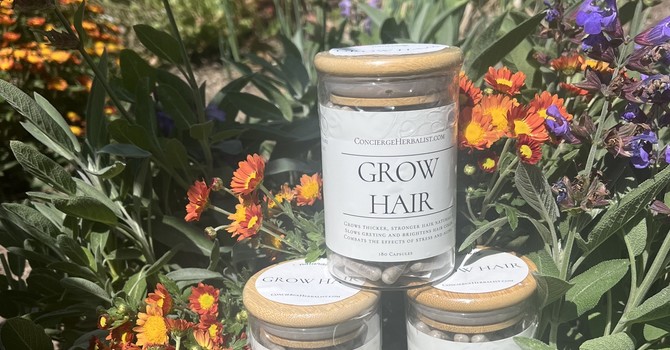
What is Grover's Disease (Transient Acantholytic Dermatosis)?
Grover's Disease, also known as transient acantholytic dermatosis, is a non-contagious skin condition characterized by itchy red bumps, primarily on the chest, back, and/or abdomen. Although it can affect anyone, it's most commonly seen in people over 40 years old.
Grover's Disease can be effectively treated and with Chinese herbal therapy. Traditional Chinese Medicine (TCM) views the condition as a reflection of internal imbalances manifesting as skin symptoms. Successful treatment focuses on addressing these underlying disharmonies through tailored herbal remedies to relieve symptoms and prevent recurrence. In Traditional Chinese Medicine (TCM), Grover’s Disease is diagnosed and treated based on distinct Patterns, each with its own set of symptoms and corresponding herbal treatments. Since there is no one-size-fits-all solution, a proper diagnosis by a Chinese herbalist trained in dermatology is recommended for optimal results.
Causes of Grover's Disease
The exact cause of Grover's Disease is not well understood, but several factors may contribute to its development:
- Heat and Sweating: Many cases are associated with increased sweating or heat exposure, which can trigger the condition.
- Sun Exposure: Prolonged exposure to ultraviolet (UV) rays may exacerbate symptoms.
- Dry Skin: Dry, irritated skin may be more susceptible to Grover's Disease.
- Age: The condition is more common in people over the age of 50.Genetics: There may be a genetic predisposition, although this is not well established.
- Medications: Certain medications, such as corticosteroids, may trigger or worsen the condition in some individuals.
Symptoms
- Itchy Red Bumps: The primary symptom is the sudden appearance of small, red, itchy bumps, often on the chest, back, abdomen, and sometimes the shoulders or thighs.
- Blisters: In some cases, blisters may form, which can become crusted or scaly.
- Localized: The rash is usually confined to specific areas and does not spread widely across the body.
Conventional (Western Medicine) Treatments
Western dermatologists often perform a skin biopsy to confirm diagnosis. Biopsy involves taking a small sample of skin from the affected area, which is then examined under a microscope to confirm the diagnosis. The biopsy can reveal specific changes in the skin cells that are characteristic of Grover's Disease, such as acantholysis (loss of cohesion between skin cells).
Western Medicine has limited treatments to help resolve Grover's Disease and its symptoms, particularly the itchiness. Western dermatology might have you try the following, with limited effectiveness for many.
- Topical Steroids: Corticosteroid creams or ointments are commonly prescribed to reduce inflammation and itching.
- Moisturizers: Keeping the skin well-hydrated with emollients can help soothe irritation and prevent dryness.
- Oral Antihistamines: These may be used to control itching, especially at night.
- Cool Compresses: Applying cool, damp cloths to the affected areas can provide temporary relief from itching.
- Avoiding Triggers: Reducing heat exposure, wearing loose-fitting clothing, and avoiding activities that cause excessive sweating can help manage the condition.
In more severe or persistent cases, Western medicine may consider additional treatments.
- Phototherapy: Ultraviolet light therapy can be effective in some cases, particularly when the rash is widespread.
- Oral Medications: For more severe symptoms, oral retinoids or systemic corticosteroids may be prescribed. In these situations, it is recommended to see a Chinese Herbalist to see if these systemic pharmaceuticals can be prevented.
- Antibiotics: If secondary bacterial infection occurs due to scratching, antibiotics may be necessary.
Prognosis without Treatment
Grover's Disease is sometimes a self-limiting condition, meaning it may resolve on its own within a few weeks to months. However, in some cases, it can persist for years or recur periodically.
- Chronic or Recurrent: While many individuals experience only a single episode, others may have chronic or recurring symptoms. Chronic Grover’s is a condition treatable and maneagle through Chinese herbal medicine.
- Quality of Life: Although not life-threatening, the intense itching can significantly impact quality of life, making effective symptom management crucial.
- Long-Term Management: Regular use of moisturizers and avoidance of triggers may help reduce the frequency and severity of flare-ups.
If you experience symptoms of Grover's Disease, particularly chronic Grover’s Disease, you may consider consulting a Chinese Herbal Medicine dermatology specialist for an accurate diagnosis and treatment plan from a Chinese medical lense.
Chinese Herbal Medicine’s Approach to Grover’s Disease
With Chinese herbal medicine, treatment is highly individualized, focusing on the unique cluster of symptoms that varies by individual. This approach recognizes that there is no "one-size-fits-all" diagnosis for conditions like Grover's Disease, and there are different phases (acute vs. chronic). Instead, Chinese medicine identifies a personalized diagnosis, known as a "pattern," by carefully assessing the specific symptoms and underlying imbalances in the body. By accurately determining the pattern, trained herbalists can select the most effective herbal combinations that you take internally by mouth to address the root cause and provide optimal results. Chinese herbal therapy also can involve using herbs directly on the skin to help quicken the relief of symptoms, particularly the itch. An overall plan may also include recommendations on avoiding triggers, lifestyle adjustments, and nutritional supplements. When reading the following, please keep in mind the terms used are Chinese Medical terms.
Primary Chinese Medical Herbal Treatment Principles for Grover’s Disease
- Cooling the Blood and Resolving Toxicity: The approach often involves using herbs that clear Heat and detoxify the body, as Heat or toxicity in the Blood is a common cause of skin conditions.
- Dispersing Wind and Dampness: Since itching and fluid retention are often due to Wind and Dampness, herbs that disperse these factors are used.
- Nourishing Yin and Blood: Chronic conditions may require herbs that nourish Yin or Blood to address underlying deficiencies and prevent recurrence.
Prognosis of Grover’s Disease in Chinese Medicine
Individualized Treatment: The success of treatment depends on accurately identifying the underlying pattern and tailoring the treatment accordingly. Early intervention can lead to quicker symptom relief and a lower chance of recurrence. The use of herbal tea formulas you drink, combined with topical applications of herbs are often used together.
Chronic Cases: Long-term management, including lifestyle and dietary adjustments along with ongoing herbal treatments, may be necessary for some chronic or recurrent cases to maintain balance and prevent flare-ups. Regular consultation with a qualified TCM practitioner is essential to adjust the treatment plan based on progress and any changes in symptoms. As your symptoms change, the herbal combinations often change.
TCM (Traditional Chinese Medicine) Pattern Diagnosis and Symptoms
The following are the most common Patterns (TCM diagnosis) I see in people with Grover’s Disease. In reality, people often have a combination of these Patterns, in which case herbal therapies can combined, modified, with specific herbs added and subtracted to match the individual. Chinese herbal therapy is truly a personalized medicine.
Wind-Heat in the Skin
Symptoms:
- Sudden appearance of red, itchy rashes or bumps
- Sensation of heat or burning in the affected areas
- Symptoms worsen with heat, sun exposure, or hot weather
- Possible mild fever or aversion to wind
Herbal Treatment Focus: Disperse Wind, clear Heat, and relieve itching.
Damp-Heat Accumulation
Symptoms:
- Red, inflamed rashes or blisters, often wet or oozing
- Intense itching, with a feeling of heaviness in the body
- Possible digestive issues like bloating or loose stools
- Symptoms worsen in damp or humid weather
Herbal Treatment Focus: Clear Damp-Heat, reduce inflammation, and stop itching.
Blood Heat
Symptoms:
- Persistent red rashes or papules that feel hot to the touch
- Severe itching, especially at night
- Restlessness or irritability
- History of other inflammatory skin conditions
Herbal Treatment Focus: Cool the Blood, clear Heat, and calm itching.
Blood Stasis
Symptoms:
- Dark, purplish, or brownish skin lesions that heal slowly
- Itching with a sense of tightness or pressure in the affected area
- Possible history of trauma or chronic skin issues
Herbal Treatment Focus: Invigorate Blood circulation, remove Stasis, and promote healing.
Yin Deficiency with Heat
Symptoms:
- Chronic or recurrent rashes, often with dry, scaly skin
- Itching worse in the evening or at night
- Sensation of heat in the palms, soles, or chest
- Possible night sweats or dry mouth
Herbal Treatment Focus: Nourish Yin, clear deficient Heat, and soothe the skin.
Have Further Questions?
Consulting with a skilled TCM herbalist is essential for creating a treatment plan that adapts to your evolving symptoms as you progress with herbal therapy. As your condition changes, the herbal combinations will be adjusted to ensure the best results. If you have further questions or are wondering if you're a good candidate for herbal therapy for Grover’s Disease, I strongly recommend consulting a Chinese herbalist with specialized training in dermatology.

Kim Drolet
Contact Me



